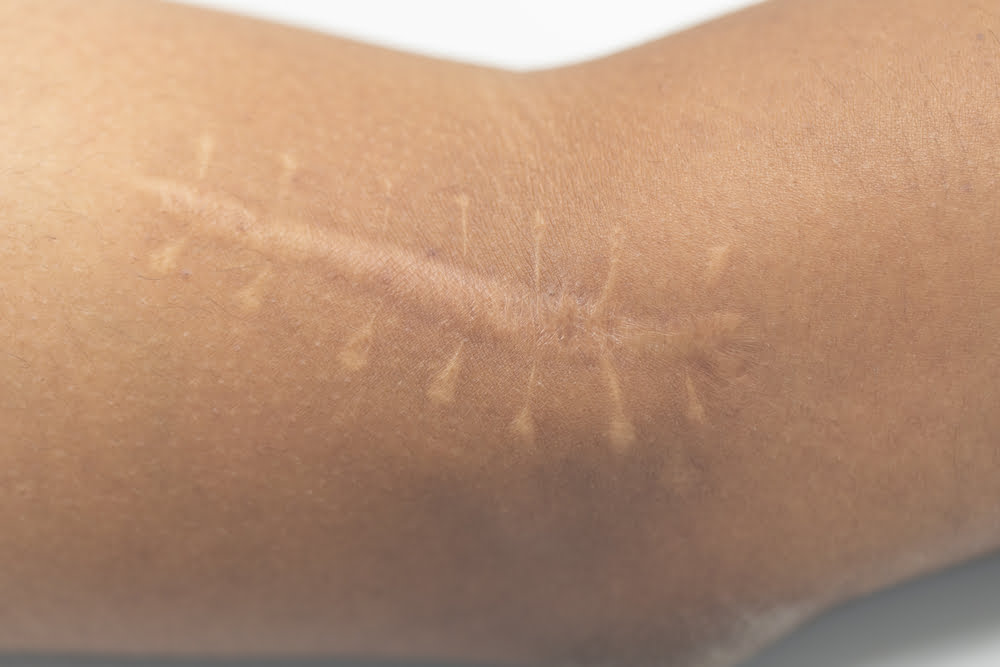Scar removal and wound healing in Türkiye using Z-Plasty technique.
Scars can become visible after wound healing, affecting a person’s aesthetic appearance. However, scar removal surgery in Türkiye can help minimize their visibility. Z-Plasty is a commonly used cosmetic surgical technique for treating scars. However, it may not be a suitable option for individuals with certain medical conditions such as diabetes, previous skin radiation, vascular diseases, and smoking.

Preparing for Z-Plasty Scar Removal Surgery
Firstly, it is important to inform the doctor about all medications, herbs, and dietary supplements the patient is taking. Additionally, blood thinners such as Warfarin, Clopidogrel, and Aspirin should be disclosed. It is also necessary to quit smoking or using electronic cigarettes, as tobacco and nicotine can slow down wound healing.
On the day of surgery:
The patient is provided with a consent form containing information about the procedure, as well as the risks, benefits, and alternatives. The patient can ask any questions before signing. The surgery typically takes 1 to 3 hours, and the patient can return home on the same day.
Before the surgery begins:
- An intravenous line is opened to administer fluids and medications.
- General anesthesia is given to put the patient to sleep, along with a local anesthetic injection to numb the areas of the body where the procedure will be performed. A breathing tube may also be inserted into the throat.
During the surgery:
- A Z-shaped incision is made through the scar tissue and some healthy skin. If the scar is large, multiple incisions may be made.
- The Z shape creates pointed flaps of skin, and these flaps are rearranged to release the scar and reduce skin tension.
- The incisions are closed with stitches once the flaps are secured, and some stitches may be placed beneath the skin (they dissolve later). Finally, a dressing is applied over the incision.
After Z-Plasty Scar Removal Surgery
- The patient is transferred to the recovery room until they wake up from anesthesia, during which they may experience drowsiness and nausea.
- The patient may experience throat pain due to the presence of the breathing tube, and therefore medication is given to manage any discomfort.
- The patient stays in the hospital for one or several nights if the procedure area is large.
Recovery at Home:
The patient should follow the instructions provided upon returning home, which generally include:
- Taking prescribed medications accurately and strictly according to the instructions.
- If allowed by the doctor, using cold compresses (to alleviate discomfort and control swelling). A cold pack wrapped in a thin towel should be used, and it is important not to leave the cold compresses for an extended period or use an unwrapped ice pack, as both can harm the skin.
- The cold pack should be applied for no more than 10 minutes at a time, then removed for 20 minutes, and the process should be repeated as needed.
- The dressing should be left in place until instructed to remove or change it. When allowed to change, it should be replaced every 24 hours or when it becomes wet or soiled.
- Avoid swimming, bathing, hot tub use, and other activities that allow water into the incisions.
- Do not apply any lotions, creams, or ointments to the area until it has fully healed.
- If wounds or stitches become sweaty or damp, they should be dried or changed.
- Keep the skin moisturized by applying suitable products and consult with a healthcare professional for a period of 3 to 4 months.
- Avoid exposing the area to sunlight, and if permitted, use sunscreen.
- Avoid engaging in sports or any activities that stretch the skin until instructed otherwise. It’s important to consult with the doctor regarding safe movements that can be performed during the recovery period.
Cases that should be reported to the doctor immediately:
- Fever (38 degrees Celsius or higher).
- Increased pain after 24 hours.
- Increasing redness or swelling at the surgical site.
- White, yellow, or foul-smelling discharge from the wound.
- Bleeding that does not stop even with pressure applied to the site for a few minutes.
- Opening of the surgical incision edges.
Medical follow-up after Z-Plasty scar removal surgery:
Schedule several visits to the doctor to monitor and evaluate the healing process. Any stitches that need to be removed will be taken care of, and the results of the scar removal surgery will be periodically assessed.
Potential risks and complications:
These may include the following:
- Infection
- Bleeding
- Swelling
- Dissatisfaction with the appearance of the new scar
- Nerve and blood vessel damage
- Risks associated with anesthesia
Scar removal in Türkiye:
The medical staff of surgical teams, doctors and consultants in REHABTÜRK can provide the best treatment options and free consultations – by striving to keep abreast of the latest medical technologies and methods.

